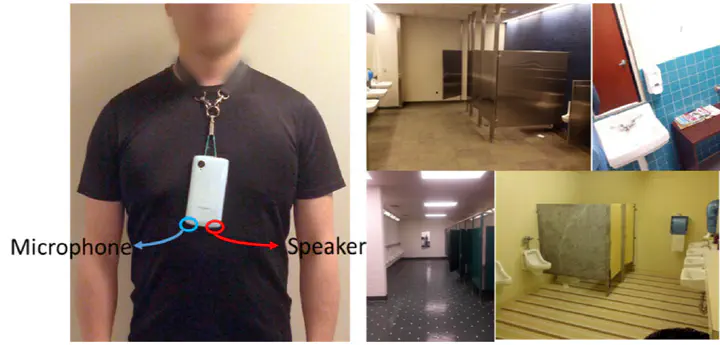
Abstract
Although there are clear benefits to automatic image capture services by wearable devices, image capture sometimes happens in sensitive spaces where camera use is not appropriate. In this paper, we tackle this problem by focusing on detecting when the user of a wearable device is located in a specific type of private space—the public restroom—so that the image capture can be disabled. We present an infrastructure-independent method that uses just the microphone and the speaker on a commodity mobile phone. Our method actively probes the environment by playing a 0.1 seconds sine wave sweep sound and then analyzes the impulse response (IR) by extracting MFCCs features. These features are then used to train an SVM model. Our evaluation results show that we can train a general restroom model which is able to recognize new restrooms. We demonstrate that this approach works on different phone hardware. Furthermore, the volume levels, occupancy and presence of other sounds do not affect recognition in significant ways. We discuss three types of errors that the prediction model has and evaluate two proposed smoothing algorithms for improving recognition.